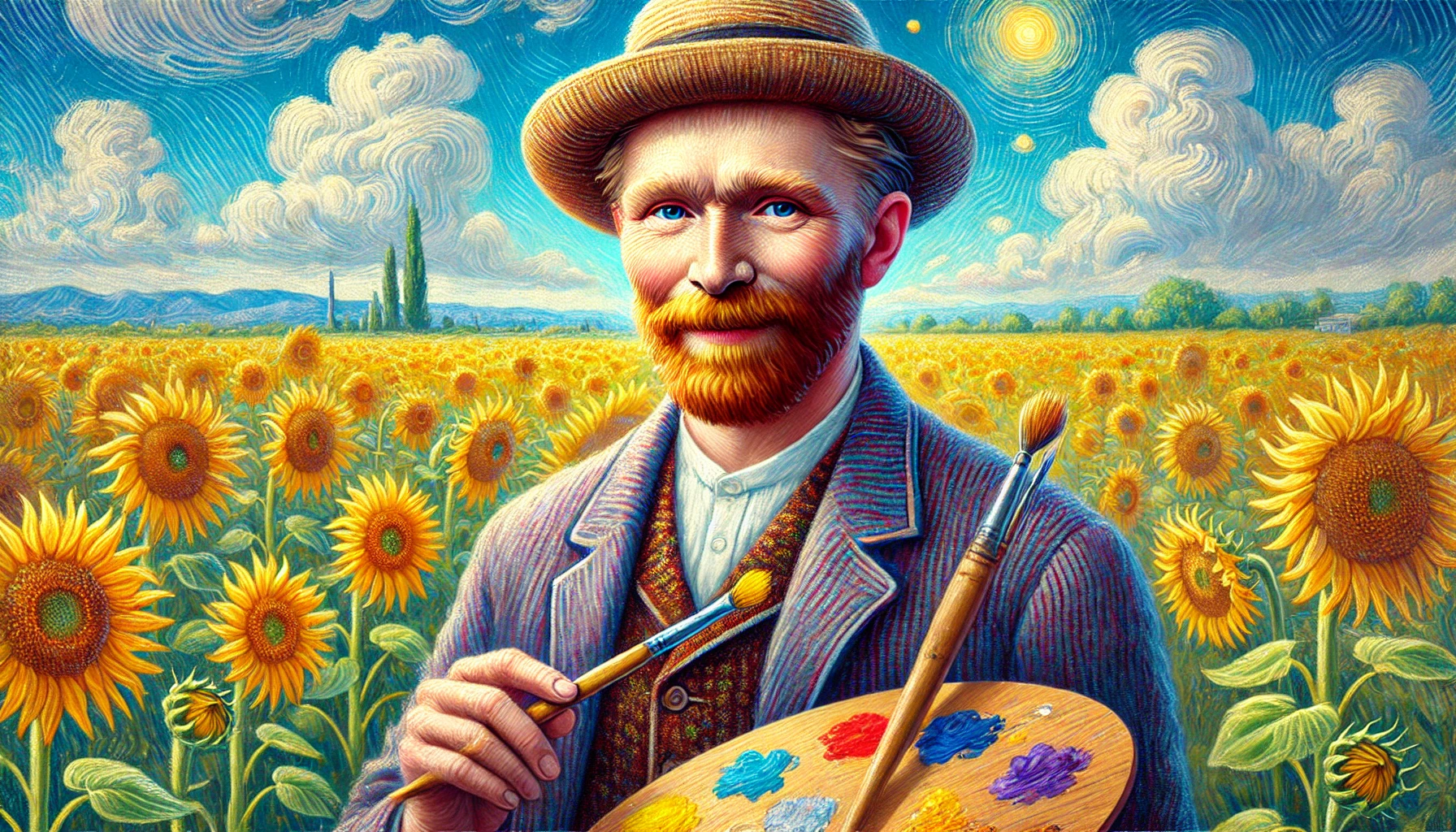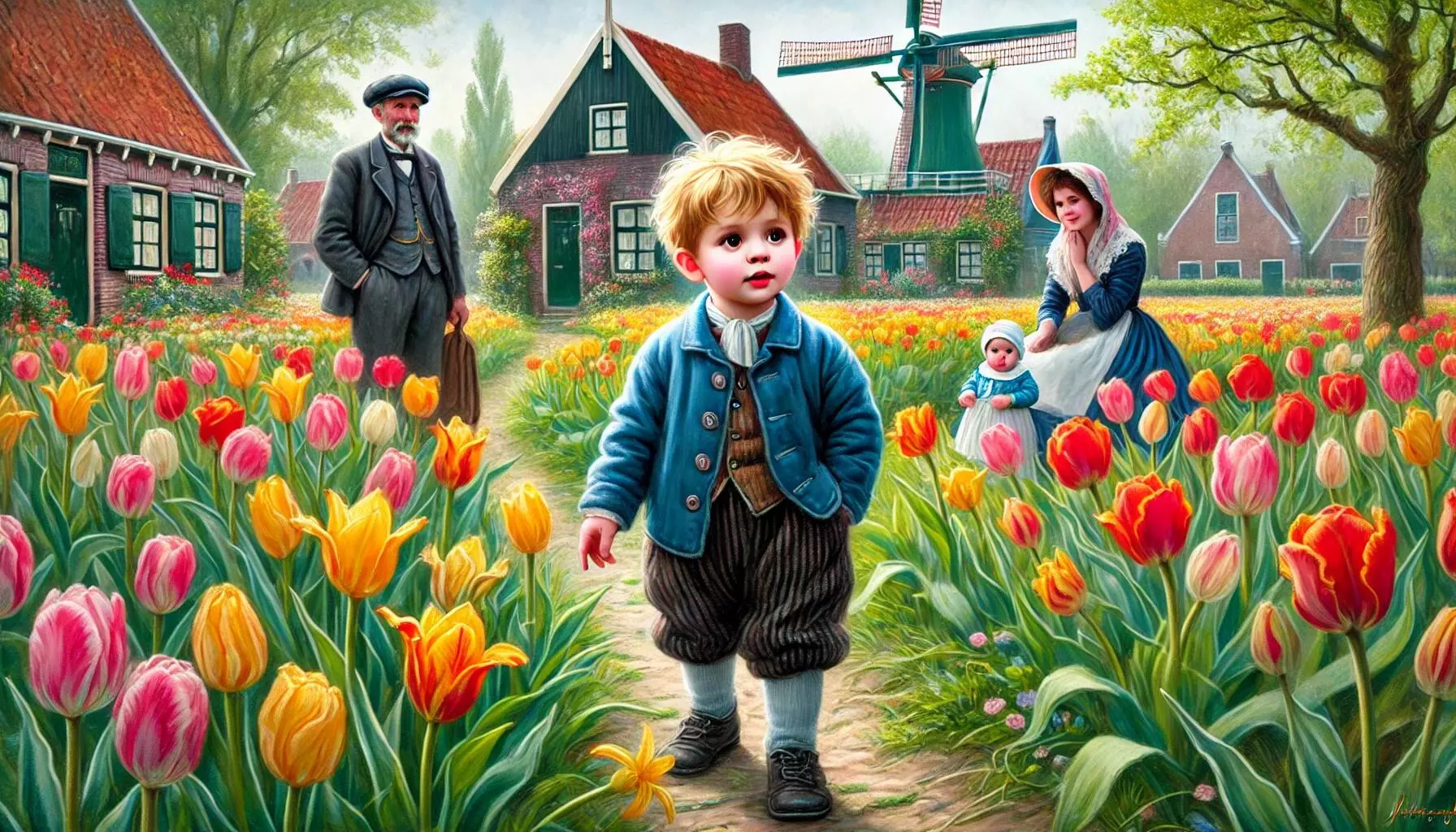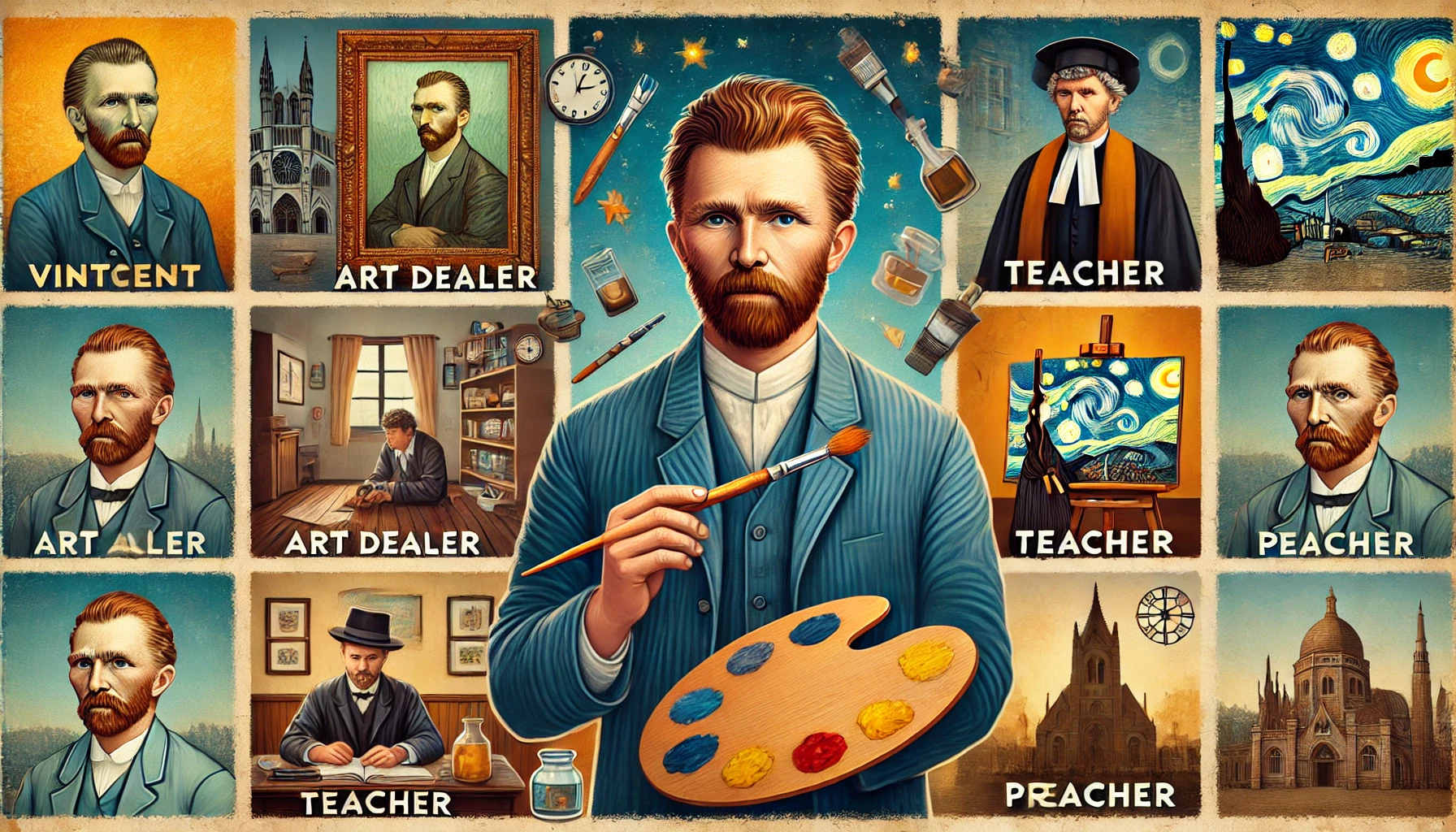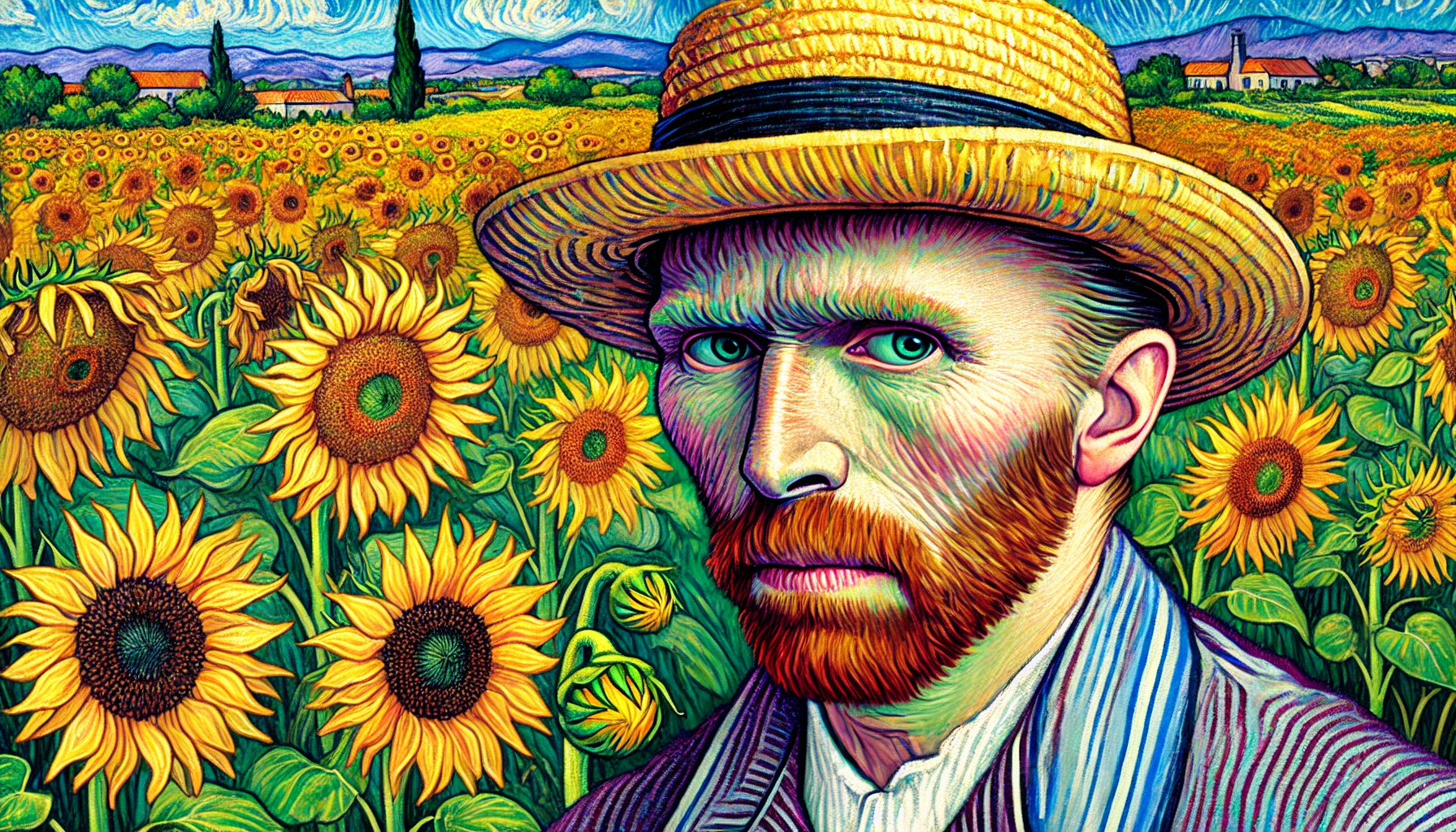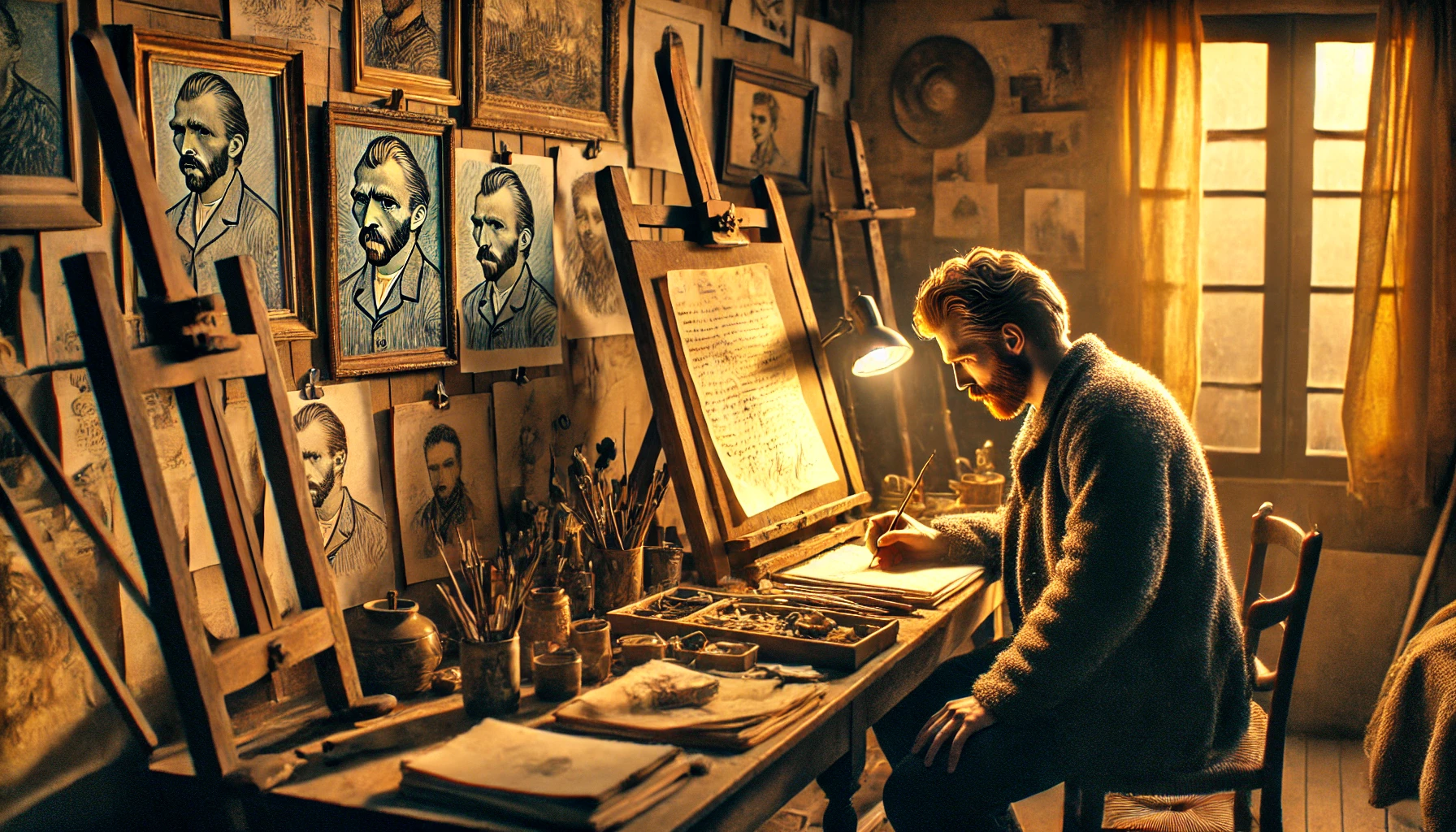Early Years and Peculiar Families
Vincent van Gogh was born on March 30, 1853 in Groot-Zundert, the Netherlands, into a family that could have been straight out of a period novel. His father, Theodorus, was a Protestant pastor, and his mother, Anna Cornelia, a lover of nature and drawing, although she never imagined that her son would become one of the most influential painters in history.
From a young age, Vincent proved to be a peculiar boy, someone who preferred solitary walks through tulip fields to playing with other children. Who needs friends when you can have flowers, right?
The Journey to Art
Vincent did not start out as a painter; his career had more twists and turns than a soap opera. He worked as an art dealer, a teacher, and even a preacher. But, like many success stories, Vincent’s true passion came after a few failures. At the age of 27, he decided to devote himself entirely to painting, and there began the journey that would lead him to become a misunderstood genius.
The Struggle with Mental Health
Ah, Van Gogh’s mind, a place of boundless creativity and inner storms. He suffered from various mental health issues, including severe depression, psychosis, and possibly bipolar. At a time when mental health was not well understood, Vincent struggled with his demons almost single-handedly. Can you imagine dealing with that without Google or a good therapist? A true hero.
Time in Arles: Ears and Sunflowers
Vincent’s time in Arles, France, is legendary. It was here that he created some of his most famous works, including “The Sunflowers.” However, it was also a period of great emotional turmoil. His famous quarrel with fellow artist Paul Gauguin culminated in an incident where Vincent cut off part of his ear. Imagine having an argument so intense that you end up with self-surgery – now that’s passion!
Love Letter to Theo
If there is anyone who truly understood Vincent, it was his younger brother, Theo. The correspondence between them is a fascinating window into Van Gogh’s mind. His letters reveal not only his deepest and darkest thoughts, but also his love of art and beauty.
The Legacy of a Genius
Vincent van Gogh died on July 29, 1890, at the age of 37, leaving a legacy that the world would not fully understand until years later. His paintings, now valued in the millions, are testaments to his talent and personal struggle.
Major Works
- The Sunflowers (1888)
- The Starry Night ( 1889)
- Self-Portrait with a Bandaged Ear (1889)
- Wheat Field with Crows (1890)
- Vincent’s Room at Arles (1888)
NOTE: The images in this article are merely illustrative and were created with artificial intelligence.
Sources
- “Van Gogh: The Life” by Steven Naifeh and Gregory White Smith.
- “Dear Theo: The Autobiography of Vincent Van Gogh” edited by Irving Stone.
- Van Gogh Museum, Amsterdam


